Posted: July 23rd, 2014 | 1 Comment »
Many thanks to Black Publishing of Poland for translating and publishing the Polish language edition of Midnight in Peking – Polnoc w Pekinie. Just 27.92 Zloty’s by the way!
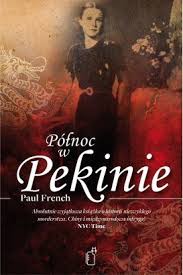
Przeł. Stanisław Tekieli
1937 rok. Kolonialny Pekin. Pewnego dnia córka brytyjskiego konsula nie wraca do domu…
Szokujące morderstwo wstrząsnęło Chinami u progu II wojny światowej. Ciało Pameli Werner znaleziono blisko Lisiej Wieży, poza Dzielnicą Poselstw, w miejscu, które, jak mówią legendy, jest nawiedzane przez duchy zwierząt. Dla chińskiej policji martwa biała dziewczyna oznacza kłopoty, zwłaszcza że stan ofiary wskazuje na czyn brutalnego maniaka. Całe miasto huczy od plotek i podejrzeń. Ku rozpaczy ojca Pameli, śledztwo okazuje się trudniejsze, niż ktokolwiek mógł się spodziewać. Czy uda się je doprowadzić do końca, zanim Japończycy rozpoczną inwazję?
Paul French, historyk i znawca Chin, po wieloletnich badaniach ujawnia, co naprawdę wydarzyło się przed laty.
Książka została wyróżniona prestiżową Nagrodą Brytyjskiego Stowarzyszenia Autorów Powieści Kryminalnych i nagrodą Edgara Allana Poe w kategorii Best Fact Crime.
Posted: July 22nd, 2014 | No Comments »
Mark O’Neill’s From the Tsar’s Railway to the Red Army is now available as part of the Penguin China World War One e-book series…Following his book on the Chinese “Coolie Corps” who worked on Europe’s WW1 battlefields, this short book follows those Chinese who worked in Russia and found themselves caught up in the Bolshevik Revolution…
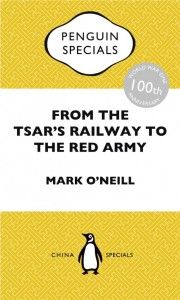
It is a little known fact that during the First World War Russia received the majority of Chinese wartime labourers working overseas. Despite assurances that they would not be involved in the war, thousands of Chinese workers dug trenches and carried ammunition for troops on the Eastern Front under brutal conditions. Then, in 1917, life for the Chinese worsened with the Bolshevik Revolution’s arrival. Some of the workers signed up to fight for the Red Army and many were left stranded in Russia, unemployed and destitute. Their plight has been described as the most tragic episode in 400 years of Chinese emigration. The men had crossed the border into Russia with dreams of earning enough money to build a house or business for their family at home. None could have imagined the hell that awaited them.
Posted: July 21st, 2014 | No Comments »
This year is of course the 110th anniversary of the Russo-Japanese War. Just as before with the Boxer Rebellion, the Russo-Japanese War inspired a raft of novels based on the war, the fear of invasion from the east (the Yellow Peril) and general concerns following the defeat of a European power by an Asian one.
Emile Driant (below) produced one of the best sellers in this quick fire post-war genre, L’invasion Jaune (The Yellow Invasion), published under the pseudonym Capitaine Danri. Driant was a French army officer and novelist of a decidedly nationalistic bent. The Yellow Invasion was published in 1905. The story depicts the surprise attack against the Western world by a gigantic Sino-Japanese army, covertly equipped with American-made weapons and secretly trained in the remote Chinese hinterland (so all the enemies – Japanese, Chinese and, of course, Les Americans too). The plot is hatched by a Japanese veteran of the Russo-Japanese War coming out of the conflict with a fanatical hatred of Westerners, he organizes a world-spanning secret society named the Devouring Dragon in order to destroy Western civilization.
And there you have it….
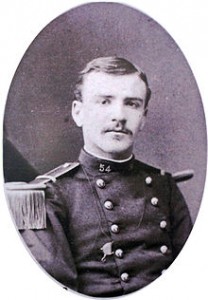
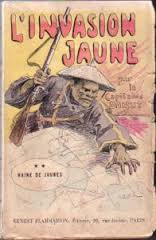
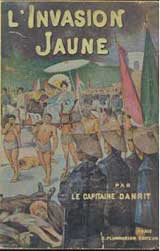

Posted: July 19th, 2014 | No Comments »
Follwoing on from yesterday’s Shanghai ballet post….Several ballet companies and troupes had been formed in Shanghai in the 1920s and 1930s including the Shanghai Variety Ballet, who’s company included Boris Vladimirovich Volkoff (1900-1974). Volkoff had started as a child star dancing, at just nine years of age, with his brother Igor on tour in Warsaw under their family name Baskakoff. After the Bolshevik Revolution he undertook a tour of duty in the Red Army where he was assigned to entertain the troops. He then attended the State Academy of Ballet and Choreography in Moscow, the school of the Bolshoi Ballet, and danced with the Mordkin Ballet. During a tour of Siberia he defected and eventually joined the Shanghai Variety Ballet composed of White Russians based in Shanghai and toured with them throughout China, India, Malaya, Burma, Japan, Hawaii and the United States. Volkoff later moved on to join the company of former Ballets Russes dancer Adolph Bolm in the United States in the late 1920s before becoming a leading figure in the Canadian ballet.

Posted: July 18th, 2014 | No Comments »
Today, a ballerina…In the 1920s Shanghai, largely due to the arrival of so many White Russians, went through a balletomane fad. The future ballerina and inspiration to the choreographer George Balanchine (when she was one of the famous “Baby Ballerina’s†(1903-1984)), Tamara Toumanova, was a White Russian refugee child who saw her first ballet in Shanghai in the 1920s, though didn’t formerly study ballet until her family had moved on from China to Paris.

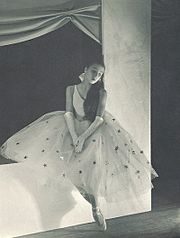
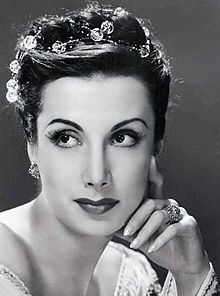
Posted: July 17th, 2014 | 1 Comment »
I read with interest Tyler Brule’s recent Fast Lane column in the FT about the impending fate of Tokyo’s Okura Hotel. Apparently developers (probably with an eye on the Tokyo Olympics in 2020 – why is it Olympics lead to more destruction than just about any other mega-event?) want to start pulling down the hotel, which Brule rightly describes as ‘one of the most loved modernist hotels in the world’ in 2015 and replacing it with something that looks rather uninteresting, to say the least. The destruction of the hotel would be a major architectural loss to a city that has already lost much due to war, fire, earthquake and crazy urban planners.
Personally I have sheltered in the lobby of the Okura a number of times from both Tokyo’s cold and heat. It is a hotel of nooks and crannies and unexpected surprises, not least the geometric Seiko timezone map of the world (see below) – which could hang in a museum as a piece of art quite easily. The Okura was built largely for the Tokyo Olympics of 1964.
Monocle (Brule’s publication) has launched an online petition and microsite with some lovely photos of the hotel here.
It only takes a moment to sign and, if you’re in Tokyo, do visit the hotel, us the bar, wander the lobby, eat at the restaurants and generally enjoy the structure, just in case the worst happens….
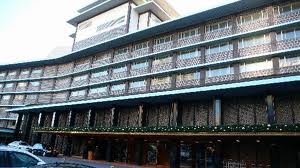

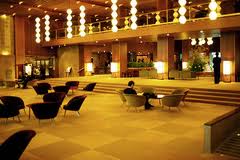

Posted: July 16th, 2014 | No Comments »
It’s unfortunately taken me a while to get round to reading Richard Lloyd Parry’s People Who Eat Darkness, but after finishing Mara Hvistendahl’s excellent And the City Swallowed Them I took it down off the shelf. Even if you are not familiar with the terrible Lucie Blackman murder in Tokyo in 2000 and the manhunt and anguished family appeals that followed this book will draw you in. It is a truly amazing piece of writing and research about a victim, a murderer and Tokyo….
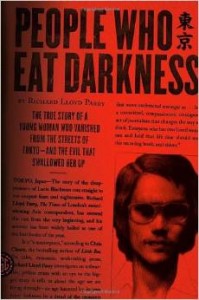
Lucie Blackman – tall, blonde, and 21 years-old – stepped out into the vastness of Tokyo in the summer of 2000, and disappeared forever. The following winter, her dismembered remains were found buried in a seaside cave.
The seven months in between had seen a massive search for the missing girl, involving Japanese policemen, British private detectives, Australian dowsers and Lucie’s desperate, but bitterly divided, parents. As the case unfolded, it drew the attention of prime ministers and sado-masochists, ambassadors and con-men, and reporters from across the world. Had Lucie been abducted by a religious cult, or snatched by human traffickers? Who was the mysterious man she had gone to meet? And what did her work, as a ‘hostess’ in the notorious Roppongi disrtic of Tokyo, really involve?
Richard Lloyd Parry, an award-winning foreign correspondent, has followed the case since Lucie’s disappearance. Over the course of a decade, he has travelled to four continents to interview those caught up in the story, fought off a legal attack in the Japanese courts, and worked undercover as a barman in a Roppongi strip club. He has talked exhaustively to Lucie’s friends and family and won unique access to the Japanese detectives who investigated the case. And he has delved into the mind and background of the man accused of the crime – Joji Obara, described by the judge as ‘unprecedented and extremely evil’.
With the finesse of a novelist, he reveals the astonishing truth about Lucie and her fate. People Who Eat Darkness is, by turns, a non-fiction thriller, a courtroom drama and the biography of both a victim and a killer. It is the story of a young woman who fell prey to unspeakabale evil, and of a loving family torn apart by grief. And it is a fascinating insight into one of the world’s most baffling and mysterious societies, a light shone into dark corners of Japan that the rest of the world has never glimpsed before.
Posted: July 15th, 2014 | No Comments »
My Penguin China e-book short on China at the Treaty of Versailles (part of the ongoing Penguin China World War One series), Betrayal in Paris, contains a number of pictures of the leading members of the Chinese delegation in Paris and some of the top Japanese negotiators…but there were several pictures of various other characters involved in the story that there simply wasn’t space to use. So here they are….
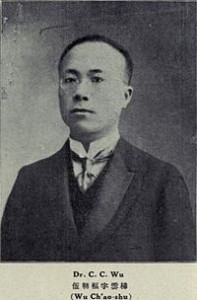
CC Wu (Wu Chaoshu), the son of Wu Ting-fang (a supporter of the Canton government and prominent Chinese diplomat), was brought into the Chinese nogotiating team at a later stage, though he also made little impact in Paris in 1919.Â

SteÌphen Pichon, who had been French ambassador to China during the Boxer Rebellion, met several times with the Chinese delegation in Paris

Chengting ‘Thomas’ (CT) Wang (Wang Zhengting), in his mid-thirties, found himself the titular Chinese delegation leader for a time after Lou Tseng Tsiang’s hasty retreat.He was an ardent loyalist to the Southern Government.
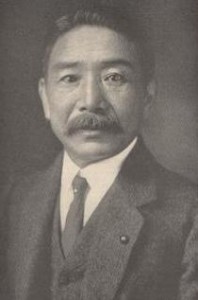
Viscount Chinda Sutemi, then Tokyo’s ambassador in London, a key member of the Japanese negotiating team in Paris in 1919
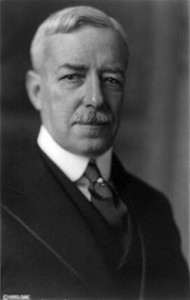
US Secretary of State Robert Lansing offered little in the way of actualpromises and voiced his concerns to the Chinese delegation that the European powers would back Japan
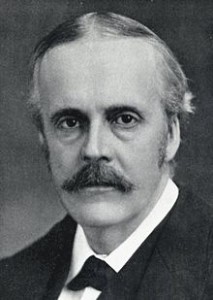 British foreign secretary Arthur Balfour, who led the so-called ‘committee of experts’ that finally decided China’s fate in Paris
British foreign secretary Arthur Balfour, who led the so-called ‘committee of experts’ that finally decided China’s fate in Paris
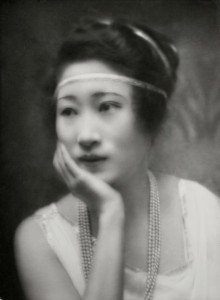

The Peranakanese sugar-cane heiress, Chinese-Indonesian Oei Hui-lan (Huang Huilan), a noted beauty and style-setter, who was courted and eventually married Wellington Koo in Paris in 1919
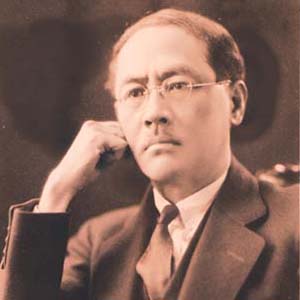
The fiery Trinidadian-Chinese Eugene Chen (Chen Youren), a well-connected and influential adviser to the southern faction of the delegation in Paris, who was to become China’s foreign minister in the 1920s, proposed a resolution condemning the big three powers, accusing Wilson particularly of betrayal.























